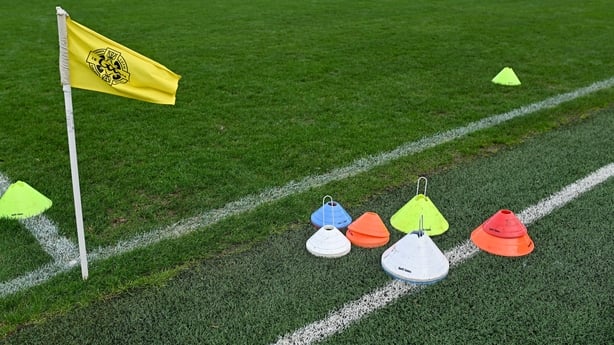With the dust firmly settled on this year's All-Ireland football championship, inter-county teams are already turning their attention to 2024.
Even though teams will not be back training collectively until their official start dates, players will be furnished with individual conditioning programs.
Over the last four or five years, some inter-county teams have embraced a phenomenon known as 'sport-specific training’. Sport-specific training is training in a manner that mimics the sport, incorporating the skills required.
For Gaelic football, it is quite often drills that use the ball. Other times it’s practicing the skills with rubber bands on, wearing a weighted vest, or attaching the participant up to a bungee cord or weighted devices such as an athletic sled.
Taking sport specific training to a new level has now seen some teams incorporate these drills into their strength programs.
Strength training is a major part of the conditioning process for footballers. In fact, nothing improves sport performance more than the development of strength and power.
While there's some consensus about the best ways to improve athletes' strength and power, discussions are now taking place about the specificity of training for football.
One particularly contentious discussion is over the very idea that there are specifics for training footballers in individual positions.
I firmly believe a goalkeeper needs a different type of field training as their role is unique on the team with shot stopping and kick-outs. I'm not sure a goalkeeper's gym program needs to be that different to a middle eight player other than more single leg exercise like squats, Romanian Deadlifts (RDL’s) and step-ups to enhance the kicking action they repeatedly do in a match.
Generic gym exercises like squatting, jumping, pressing and pulling benefits every position on the pitch.
This begs the question is there such a thing as 'sport-specific training’ and do ‘sport-specific exercises’ exist?

The most sport-specific training that a person could take part in is practicing the actual sport itself. This would suggest that true sport specific training should be left to the training field.
Strength and conditioning coaches within the GAA can develop programs that are extremely valuable when it comes to training the correct energy systems, developing specific muscle groups utilised in Gaelic football, and practicing the precise movements found in the footballer’s respective position on the pitch.
For example, a midfielder might do a dumbbell step up with a shoulder press combined, which mimics the action of going up to fetch a ball.
For a goalkeeper, lateral barbell jumps which replicate moving across the goals might be useful. Your corner-backs could do forward and backward runs over 5-10 metres while attached to a rubber band to mimic runs to get out in front of their marker.
Middle eight players might benefit from doing repeated speed runs (40-60 metres) 8-12 times to build up the ability to switch from defence to attack.
Unfortunately, the lines are sometimes blurred when coming up with strength and conditioning training programs and misconceptions arise. When this misinformation is added to a footballer’s training program, it can make them regress instead of progress.
An example in football of where training appears to be sport specific, but is not beneficial, is the practice of bulking up players.
There is a school of thought that size equals strength, so therefore making a player bigger through weight training will make him stronger. I completely disagree with this idea and would advocate that it’s far more beneficial making the player relatively strong without gaining too much muscle mass.
A modern day player needs to be strong and mobile, and it all boils down to your strength-to-weight ratio.
If two GAA players weigh the same but one is stronger, the stronger one will be able to put more force into the ground and run faster. It’s the same concept as putting a bigger engine in a plane to make it fly faster.
Relative strength ultimately dictates how explosively you can move on the pitch.
Players in the past have bulked up too much and lost their mobility and ability to get up and down the pitch. This practice, most often prevalent during pre-season, has led to a lot of hamstring and groin issues later in the season.
My explanation to players regarding weight training has always been simple. ‘I don’t care how strong you get, if you can’t move, you can’t help us.’
I worked with many GAA players focusing on strength and power over the years whilst also ensuring they can still move fast and explosively.
In doing this I developed the muscles that the player uses in the match with very little injuries, using very traditional non-sports specific type training.
I think the term sports-specific in Gaelic should be changed to sports relevant, make our GAA players fit for purpose so they can play for 70+ minutes of high-octane football without all the gimmicky training that looks good on social media.

